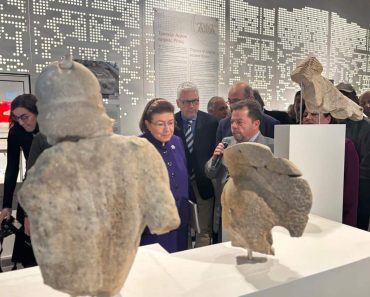
From Christmas Day until the Feast of the Epiphany, on January 6, Greeks watch over their homes especially carefully, looking for moved items or stolen Christmas goodies. That’s because, according to Greek folklore, a group of tiny goblins, called kalikantzaroi, come out during the holidays, hoping to wreak some havoc on mankind.
These little creatures are said to live under the crust of the earth all year round, sawing at the tree of life that holds up our planet and keeps it spinning, hoping to bring it crashing down. Every year during the holidays, however, these mischievous creatures come up to the earth to steal our sweets and just basically give us a hard time.
The Kalikantzaroi come up to the world during this period every year, the belief goes, because Christ has not yet been baptized and therefore cannot protect humanity from evil.
The Kalikantzaroi, or Greek Christmas goblins
On January 6, the Epiphany, which commemorates both the day the Magi visited Jesus, acknowledging that He was the Son of God, and the day that Jesus was later baptized, the kalikantzaroi are forced off of the planet, and return back down to the base of the tree of life to see that it has been healed. They therefore must start their dastardly work all over again.
Traditionally, the goblins are depicted as small, dark, hairy creatures with goat-like legs, but more recent images of the kalikantzaroi resemble more standard, human-like trolls or goblins. Although they have always had a negative connotation, kalikantzaroi are now considered festive tricksters rather than evil spirits.
Like much of European folklore, the kalikantzaroi come from ancient pagan traditions, but have been adapted to fit with Christianity. Debate regarding the exact source of these creatures ranges from ancient Greek death spirits to small bugs associated with evil spirits which were known to destroy crops.
Despite these theories, stories of creatures just like the kalikantzaroi are found in folklore across the Balkans, as well as in Cyprus and Turkey.

In Greece, the kalikantzaroi — small, malevolent creatures — represent the darkness, and Jesus is the light, banishing them from the surface of the earth.
The kalikantzaroi troll in the darkness, since they fear the light, especially fire. These little goblins only enter people’s homes after they’ve all gone to sleep, and the fireplace is no longer burning. Long ago, Greeks used to keep their fireplaces burning all throughout the holiday season to prevent the kalikantzaroi from entering their homes.
Not particularly bright creatures, it is thought that the kalikantzaroi can’t count past three. The number three holds great significance in Christianity, as it represents the Holy Trinity, and it is for this reason that it is said that the little creatures are unable to even utter the number.
Those hoping to keep the goblins away place a colander outside of their doorways, as the kalikanztaroi will sit all night trying to count the holes, never making it past the number two — rather than entering the house and running amok.
Other methods of keeping the malevolent spirits out of your house include reciting a prayer to the Holy Trinity, marking your doorway with a cross, or, in Cyprus, throwing out some little sausages and fried dough to appease them.






